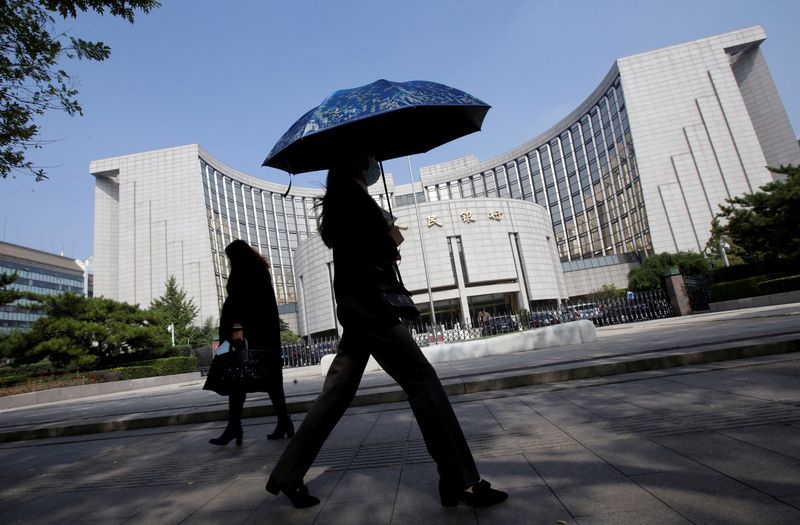BEIJING (Reuters) -China’s central bank said on Friday it would cut the amount of cash that banks must hold as reserves by 50 basis points, the second reduction this year aimed at bolstering faltering economic growth.
The move takes effect Friday and was flagged on Tuesday by PBOC Governor Pan Gongsheng at a press conference, alongside cuts in several key interest rates and measures supporting capital markets aimed at stimulating economic activity amid persistent deflationary pressures.
The People’s Bank of China (PBOC) said it would cut the reserve requirement ratio (RRR) for all banks, except those that have implemented a 5% reserve ratio.
“The PBOC has adhered to a supportive monetary policy stance, increased the intensity of monetary policy regulation and control, and improved the precision of monetary policy regulation and control, so as to create a favourable monetary and financial environment for China’s stable economic growth,” its statement said.
Pan had said such a move would free up about 1 trillion yuan ($142.44 billion) for new lending and left the door open to another reduction later this year.
But analysts have noted businesses and consumers have little appetite to take on fresh debt given the uncertain economic outlook.
The reduction follows a 50-bp cut for all banks that took effect on Feb. 5 and the weighted average RRR for financial institutions stood at around 6.6% after the cut.
Since then, however, indicators have shown China’s economy is still struggling. It grew much slower than expected in the second quarter, weighed down by a protracted property crisis and consumers’ worries about job security.
The PBOC also cut the borrowing cost of its seven-day reverse repurchase agreements by 20 basis points to 1.50% from 1.70% earlier.
This rate cut decision aims to “further strengthen counter-cyclical adjustment of monetary policy and support stable growth of the economy”, the bank said.
August economic data broadly missed expectations, adding urgency for policymakers to roll out more support. PBOC’s policy support announcement on Tuesday raised expectations among investors and economists that authorities would follow soon with a fiscal package to complement the monetary measures.
Depending on the market liquidity situation later this year, the RRR may be further lowered by 0.25-0.5 percentage points, Pan said at the Tuesday press conference, in rare forward-looking remarks.
The government is aiming for economic growth of around 5.0% for 2024, but some investment banks including Goldman Sachs, UBS and Bank of America have recently lowered their forecasts for China’s growth rate this year.
The government has allocated 300 billion yuan in ultra-long-term treasury bonds to support a programme aimed at upgrading equipment and encouraging trade-ins of consumer goods, as businesses and consumers grapple with a property sector downturn and job insecurities.
Although authorities have permitted local state-owned enterprises to purchase unsold completed homes, progress has been sluggish, and local government finances are under strain amidst a push for debt reduction.

Analysts say only fiscal policies that put money into consumer pockets through higher pensions and other social benefits can address the economic headaches.
($1 = 7.0203 )
